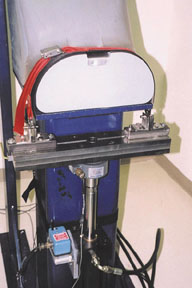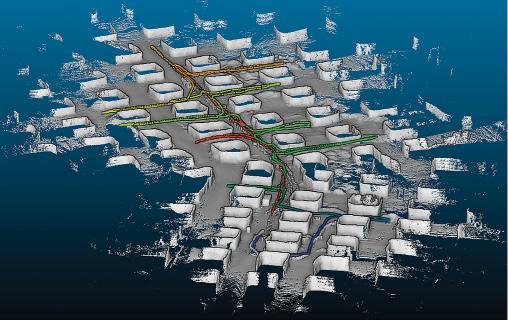Good Enough for the X-38, but Made for Commercial Aircraft
As FAA regulations become more demanding, aviation companies must find new ways to create safer products. Aircraft Belts, Inc. (ABI), of Kemah, Texas, was looking for a way to ensure the safety of its customers by developing a thorough test system for aviation restraint systems. Previous safety restraint test methods did not properly measure the load distribution placed on the restraints, leaving an unknown factor in meeting safety standards. ABI needed to improve its testing methods and update its test equipment. Through a partnership with NASA's Johnson Space Center Technical Outreach Program, the need was met.
After looking for a pre-made testing machine that could meet their requirements, ABI personnel discovered that anything purchased off-the-shelf would have to be totally overhauled in order to obtain the data necessary to give to their customers. Norman Ballard, vice-president of ABI, put out a call for help to Johnson's Technology Outreach Program and work began almost immediately.
Johnson contacted ABI to discuss its facilities, standards, and required test data. ABI was then invited to the Structural Test Lab where NASA personnel demonstrated the testing process for tethers on parachutes that are going to be used on the X-38. Because the safety of astronauts can hang on the quality of the tethers, they are tested repeatedly for durability and strength. The test system used by Johnson to evaluate the performance of the parachute tethers was exactly what the company needed to test its safety belts.
With the assistance of NASA engineers, ABI developed a hydraulic test system that provides the consumer with in-depth data about the load placed on the restraint system throughout the duration of the test. The old systems were only able to detect if the belts could sustain the applied force and could not target the problem of providing load data. In comparison, the new system modeled after the one used by NASA, can collect data that tells exactly what went wrong with belts that break and why. Depending on the test requirements of various restraint components, the system can exert a subjected force ranging from merely a few pounds to thousands. The test force can be applied to an entire safety restraint system or to its individual parts, including, stitching, webbing, and hardware.
The new test system allows load tests to be conducted in a quick and easy manner. The preparation time for the test has been minimized and all test data is now computerized. Also, the safety to the operator has been improved. Previously, the testing apparatus had no safeguards to protect against flying debris resulting from breaking belts. Suggestions from the engineers at Johnson, led to the addition of a protective wall to shield the operator. NASA know-how allow ABI's customers to receive restraint systems that will ensure the safety of passengers on all sorts of aircraft.

Engineers from NASA's Johnson Space Center helped Aircraft Belts, Inc. to develop a hydraulic test system that provides detailed data about the load placed on aircraft restraints.













